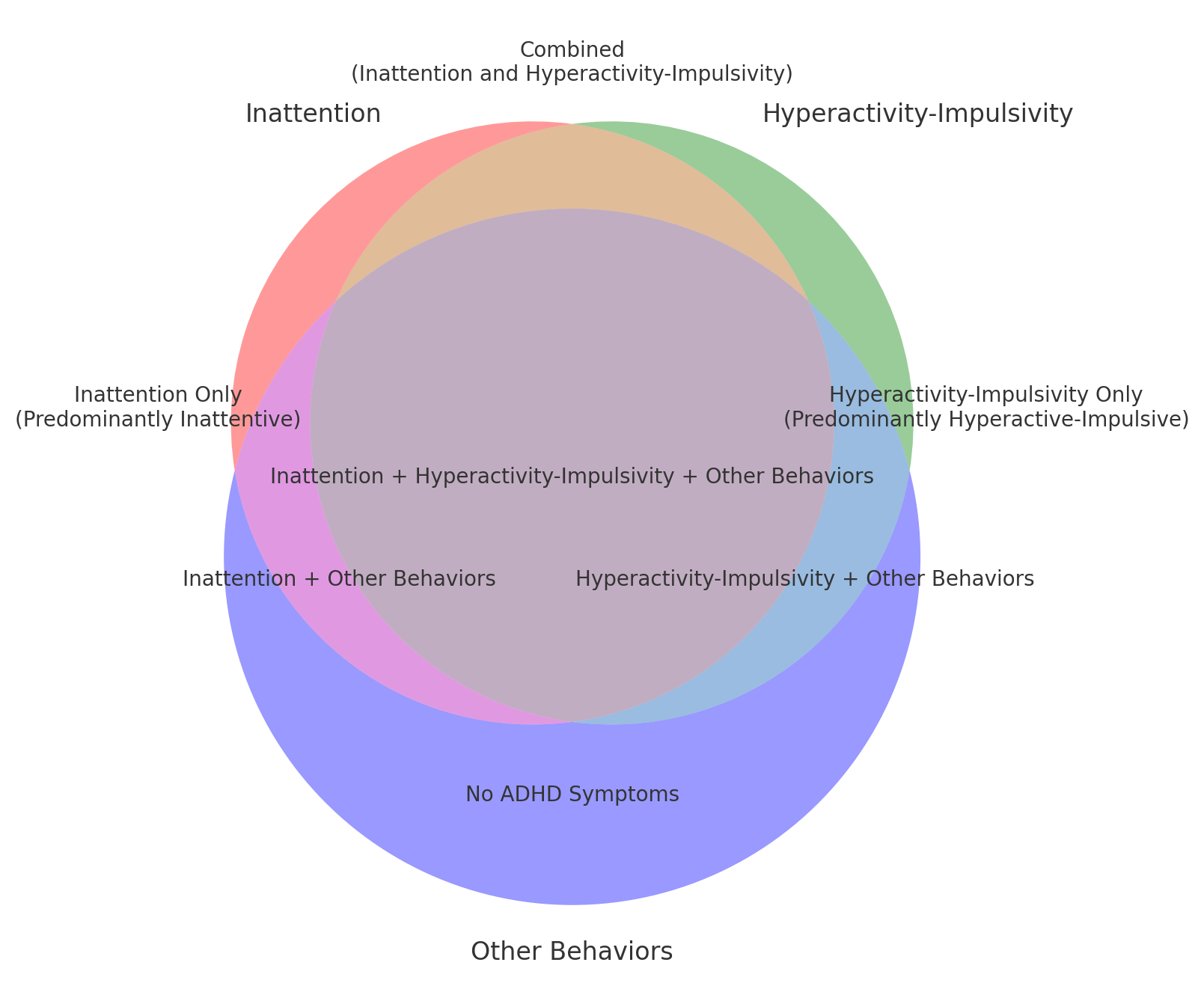Attention-Deficit/Hyperactivity Disorder (ADHD) presents unique challenges in the classroom, affecting students’ ability to focus, stay organised, and regulate their behaviour. Teachers play a critical role in identifying and supporting students with ADHD, ensuring they receive the necessary help to succeed academically and socially. Understanding the different types of ADHD and recognising their distinct characteristics is essential for creating an inclusive and supportive learning environment. This article aims to provide educators with insights into the various types of ADHD and practical strategies for identifying and assisting students who may need extra help.
Identification of ADHD in the Classroom
Identifying ADHD in the classroom involves observing students’ behaviour and performance over time. Key signals to look out for include consistent difficulty in sustaining attention during tasks or play activities, frequent careless mistakes in schoolwork, and trouble organising tasks and activities. Students with ADHD may also exhibit impulsive behaviours, such as blurting out answers, interrupting others, or having difficulty waiting for their turn. Hyperactivity can manifest as excessive fidgeting, running or climbing inappropriately, or an inability to remain seated. Additionally, teachers might notice students daydreaming excessively, losing essential items needed for tasks, or appearing forgetful in daily activities. Recognising these behaviours early allows teachers to implement targeted interventions and support strategies to help students manage their symptoms effectively.

1. ADHD, Predominantly Inattentive Presentation
Students with the predominantly inattentive presentation of ADHD primarily struggle with maintaining focus and attention. These children may appear daydreamy or lethargic, often losing track of assignments and instructions. They might frequently make careless mistakes, have difficulty following through on tasks, and seem forgetful in daily activities. Teachers might notice these students frequently zoning out during lessons, being easily distracted by external stimuli, and having trouble organising their schoolwork and belongings. Unlike other types of ADHD, these students are not typically hyperactive or impulsive, which can make their symptoms less noticeable.
2. ADHD, Predominantly Hyperactive-Impulsive Presentation
The hyperactive-impulsive presentation of ADHD is characterised by high levels of activity and impulsivity without the inattentiveness seen in other forms. Students with this type may exhibit constant motion, such as fidgeting, squirming, or running around the classroom. They often struggle to stay seated, talk excessively, and interrupt others during conversations or activities. These children may also act without thinking, making hasty decisions that can lead to trouble. Teachers might find these students frequently leaving their seats, climbing on furniture, or engaging in risky behaviours. Their energy levels can be disruptive, but their academic performance might not necessarily be impaired by inattention.

3. ADHD, Combined Presentation
The combined presentation of ADHD includes symptoms of both inattentiveness and hyperactivity-impulsivity. Students with this type display a mixture of behaviours from both categories, making it the most commonly diagnosed form of ADHD. Teachers may observe these students having difficulty sustaining attention and focus, as well as exhibiting impulsive and hyperactive behaviours. For example, a student might struggle to complete assignments due to distractibility and also interrupt peers during group activities. This combination can make classroom management particularly challenging, as these students require support for both attention-related issues and behaviour regulation. Recognizing the dual nature of their symptoms is crucial for providing comprehensive and effective interventions.
Venn Diagram Illustrating The Classification Of ADHD

Other Potential Behaviours
In addition to the primary symptoms of ADHD, teachers should be aware of other behaviours that might signal a need for additional support, even if they fall outside the typical ADHD spectrum. These behaviours can include excessive anxiety, which may present as constant worry, avoidance of social interactions, or physical symptoms like headaches and stomachaches. Oppositional defiant behaviour, characterised by frequent temper tantrums, arguing with authority figures, and deliberate attempts to annoy or upset others, can also be a concern. Additionally, learning disabilities might manifest as persistent struggles with reading, writing, or math, despite significant effort and instruction. Sensory processing issues can cause students to be overly sensitive to noise, light, or touch, leading to discomfort and distraction in the classroom. Recognising and addressing these behaviours promptly can help in providing a well-rounded support system for all students.
Support for Teachers in the UK Managing Difficult Behaviours
Teachers in the UK have access to a range of resources and support systems to help manage challenging behaviours and support students with ADHD and other special educational needs. One key resource is the Special Educational Needs Coordinators (SENCOs), who play a pivotal role in schools by coordinating support for students with special educational needs and ensuring that their individual learning requirements are met. SENCOs work closely with teachers, parents, and external specialists to develop and implement tailored educational plans.
Teacher assistance programs, which provide additional classroom support, are another valuable resource. Teaching assistants (TAs) or learning support assistants (LSAs) can work one-on-one or in small groups with students, helping them stay focused, organised, and engaged in learning activities. This support can be particularly beneficial for students with ADHD, who may need more individualised attention to manage their symptoms effectively.
Professional development and training are also crucial for equipping teachers with the skills and knowledge needed to handle difficult behaviours. Various organisations and local education authorities offer training sessions and workshops on behaviour management strategies, inclusive teaching practices, and understanding ADHD. These training programs help teachers to develop a repertoire of techniques to create a positive and supportive classroom environment.
In addition to in-school resources, there are external services available, such as educational psychologists, child and adolescent mental health services (CAMHS), and behaviour support teams. These professionals provide expert advice, assessments, and interventions for students with complex needs, working collaboratively with schools to develop effective support strategies.
Furthermore, peer support and collaboration among teachers can be invaluable. Many schools foster a culture of sharing best practices and strategies through regular team meetings, peer observations, and mentorship programs. This collaborative approach allows teachers to learn from one another and build a supportive professional community.
By leveraging these resources and support systems, teachers in the UK can effectively manage challenging behaviours in the classroom and provide a nurturing and inclusive learning environment for all students.